
Photos: Where the Sunflowers Shine
Ready for the harvest
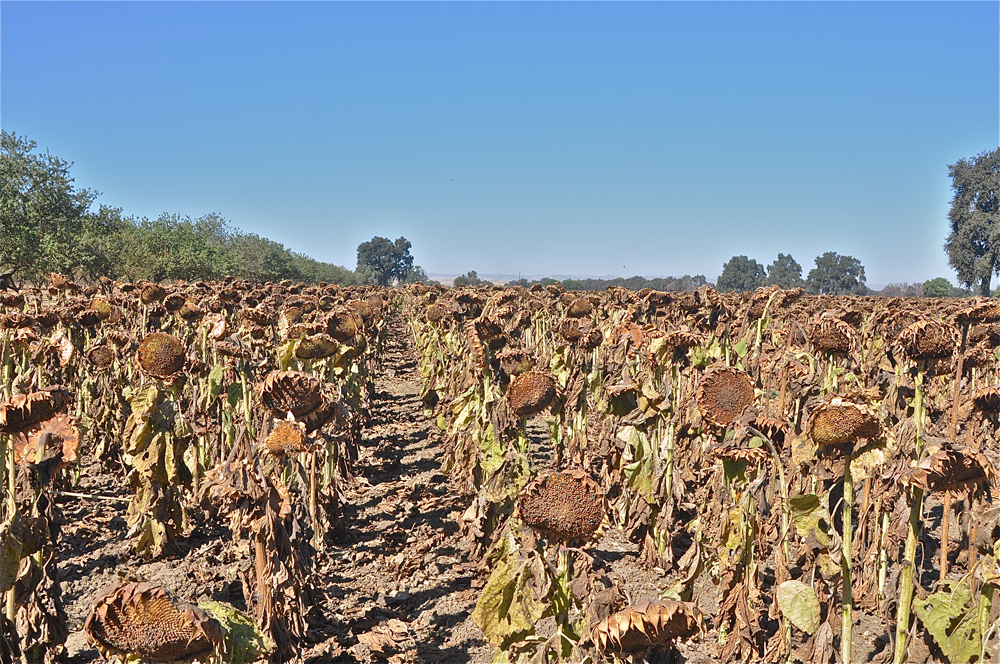
A field of yet to be harvested sunflowers (Helianthus annuus) becomes a common sight across the farmlands of the Northern Hemisphere as the warm days of summer give way to the cool winds of autumn. Sunflowers are native to North America. Evidence indicates that the tribes of Central Mexico were growing wild sunflowers as early as 3000 BC. Some evidence even points to sunflowers having been domesticated by the native people of the Americas before corn.
The spoils of exploration
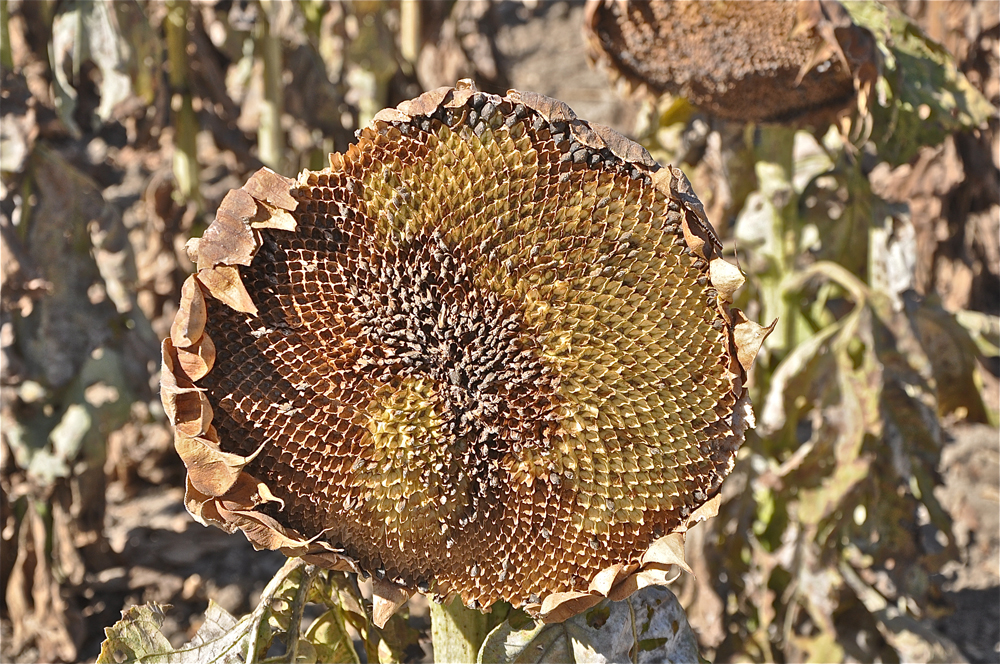
Early European explorers brought the hardy, annual plant and seeds back to their homelands beginning in the mid-16th century. The flower quickly spread across the European continent into Asia. The commercialization of sunflowers took place in Russia during the 18th century under the leadership of Peter the Great. In the early 19th century, Russian farmers were growing over 2 million acres of sunflowers. By 1830, the processing of sunflower oil had become a commercial industry in old Russia.
Gone to the birds
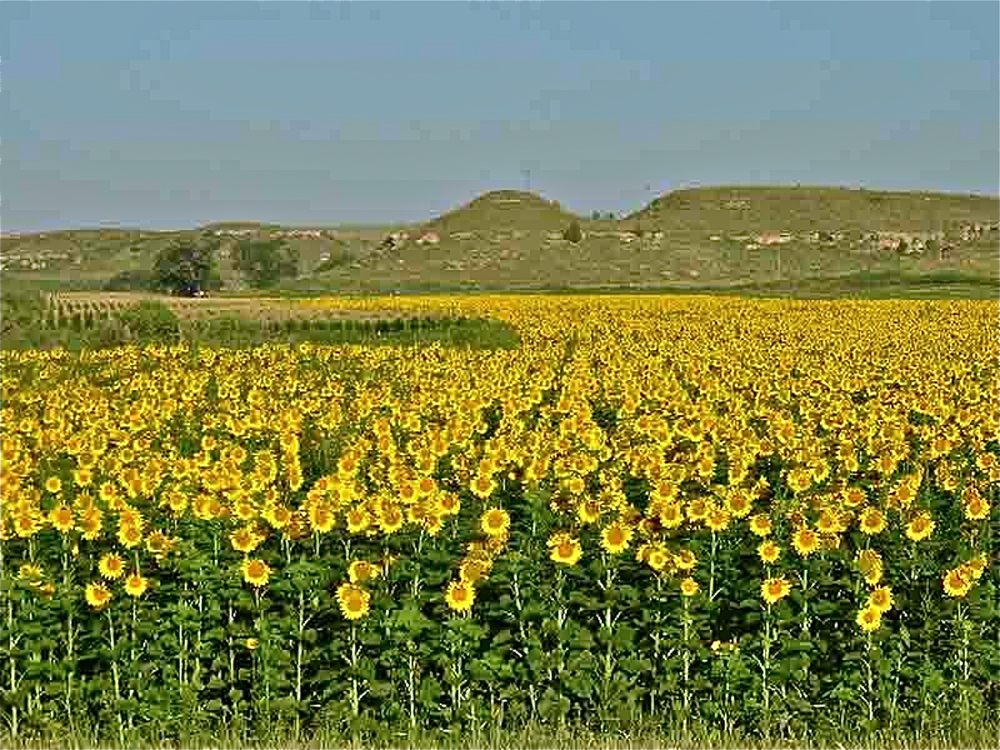
By 1880, "Mammoth Russian" sunflower seeds could be purchased in the seed catalogues of the United States and Canada. The first commercial use, in the United States, of the millions of seeds produced in fields of sunflowers like the one shown above was for poultry feed. In 1926, the Missouri Sunflower Company Association began the first American processing of sunflower seed oil.
The image of the sun
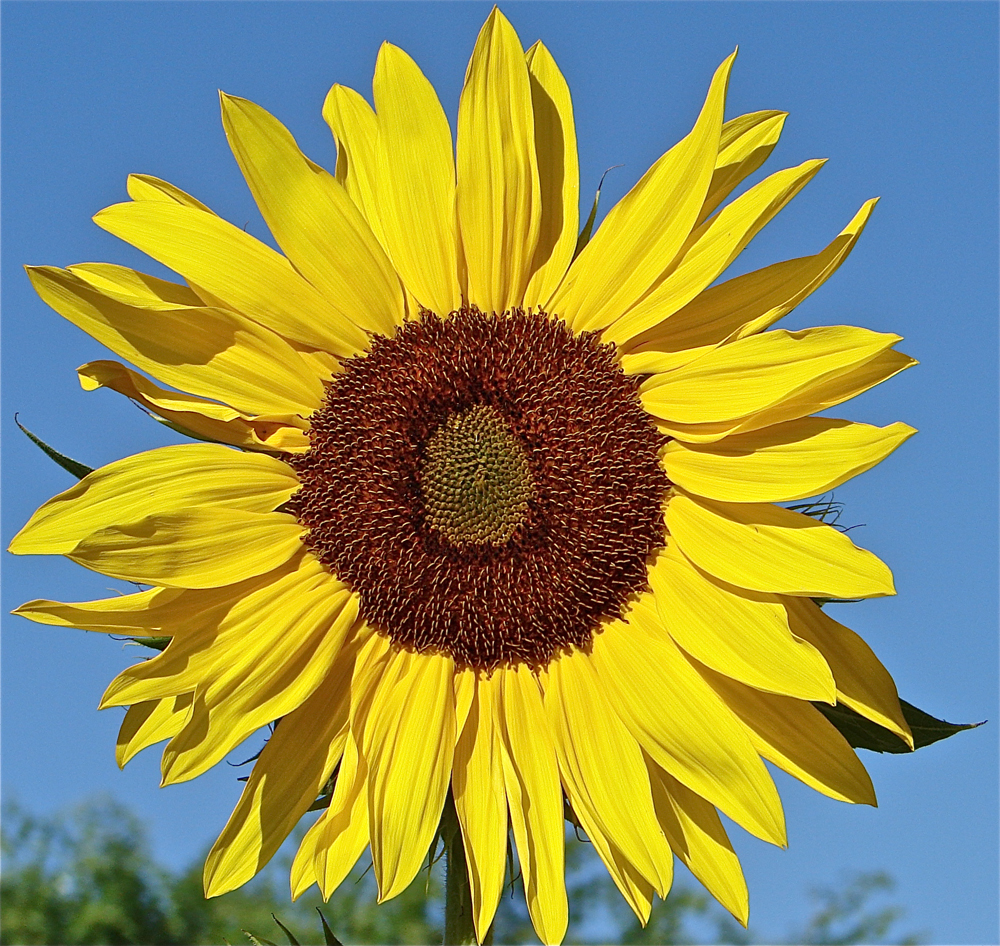
The sunflower is a member of the Asteraceae family of plants, one of the most successful and common of plant families. The name comes from the disc-shape of the large inflorescence (flowering head), which is said to be similar to an image of the sun. The flowering head commonly grows in size from 4 to 12 inches (10 to 30 centimeters). The largest sunflower head ever recorded reached a diameter of 32 inches (82 cm) and was grown in 2004 in British Columbia, Canada.
One from many
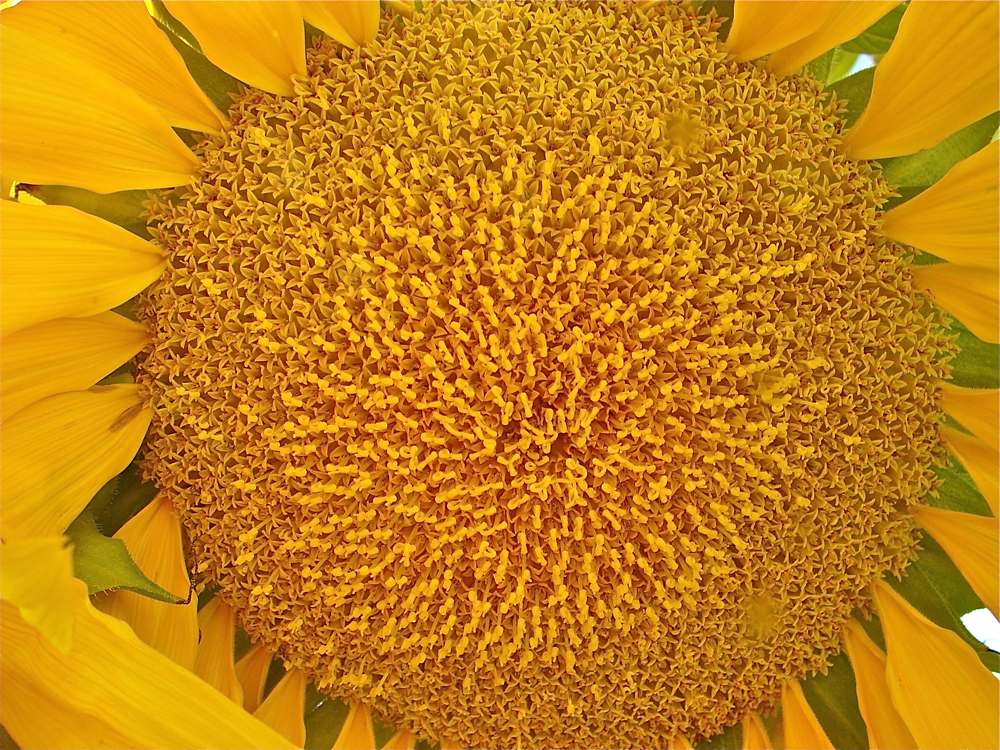
A mature, blooming sunflower is a composite flower since it is made up 1,000 to 4,000 small individual flowers in each head. These individual florets are arranged in two, opposite helixes that begins at the center of the flowering head. The individual florets are aligned from the center at an angle of 137.5 degrees, guaranteeing the closest possible alignment of florets and seeds on the flowering head. The florets mature progressively from the outside of the disk to the center.
Ray flowers
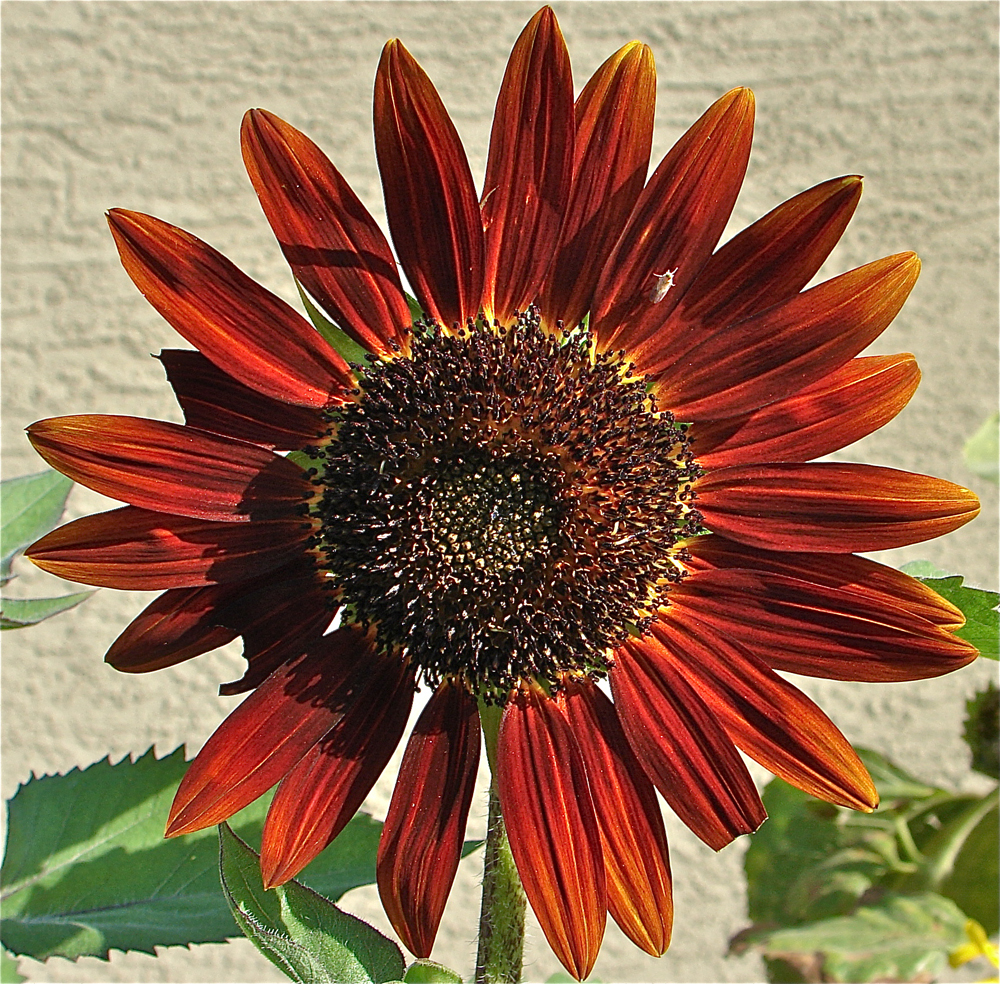
The florets of a sunflower are actually two different types of flowers known as ray flowers and disk flowers. The ray flowers are found around the outer edge of the flowering head and produce the large, petal-like structures that are usually yellow but can be red, brown and even deep purple. Ray flowers are usually female and infertile.
Disk flowers
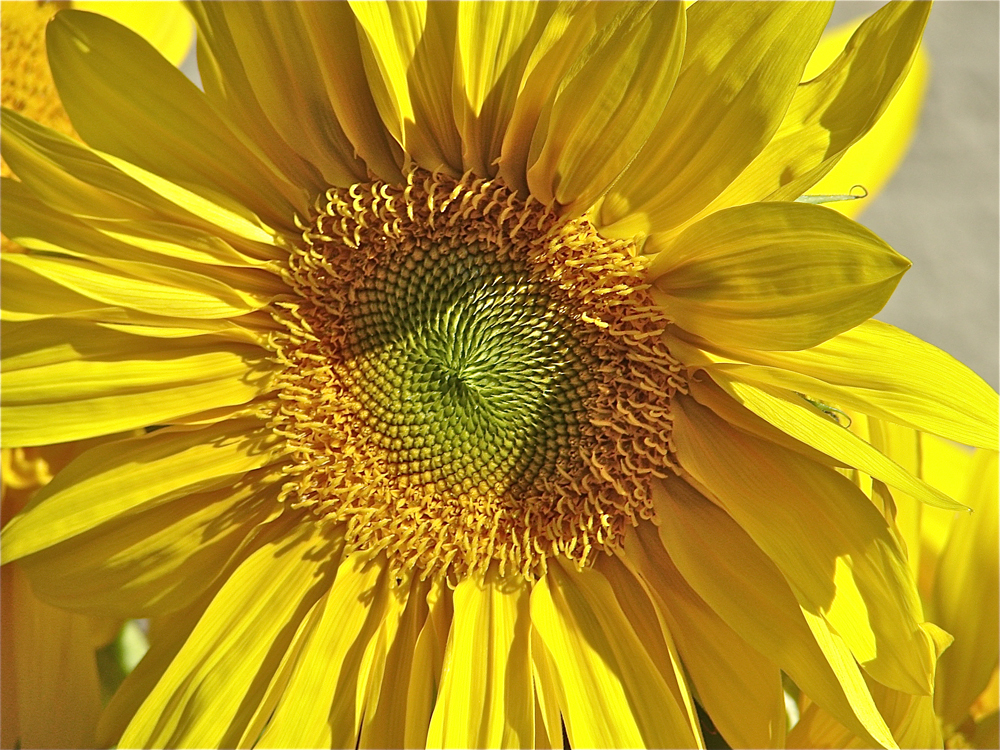
The small, closely packet florets of the disk flowers are found in the center of the flowering head. Each disk flower has all the parts of a complete flower and each is fertile. Each disk flower when fertilized will produce its own seed. It is the disk flowers that are arranged and grow in one of the most interesting spiral patterns found in nature.
Sign up for the Live Science daily newsletter now
Get the world’s most fascinating discoveries delivered straight to your inbox.
Sun worshippers
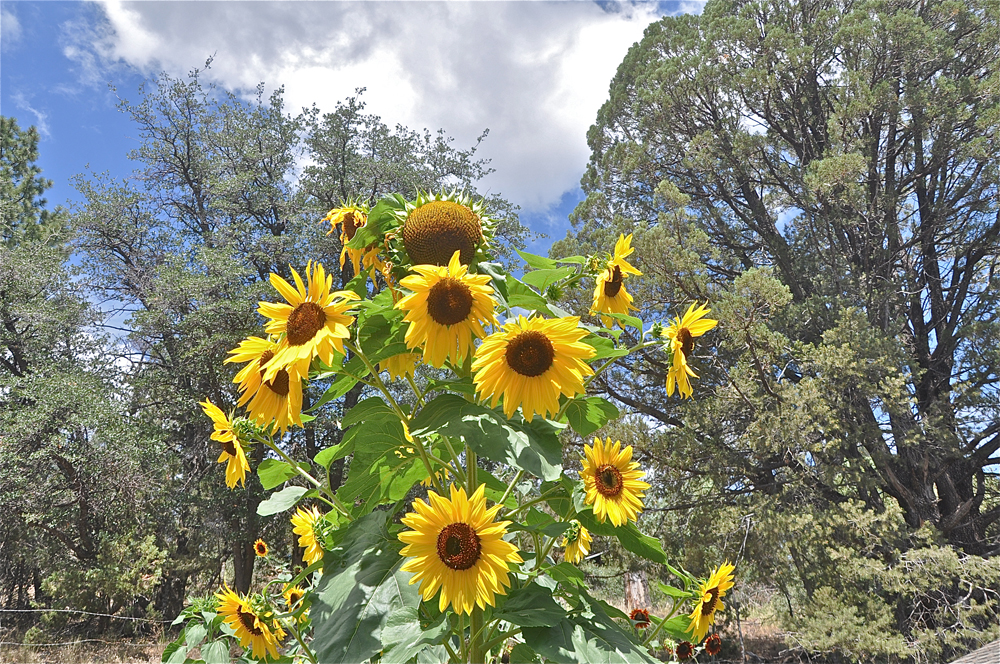
Sunflowers grow best in 100 percent sunshine. They do not grow well in any shaded environment. They have the ability to thrive in both high and low temperature ranges. Their seeds can tolerate cold temperatures during germination, which greatly enhances their ability to grow in regions that undergo wide seasonal changes in temperatures.
Following the sun
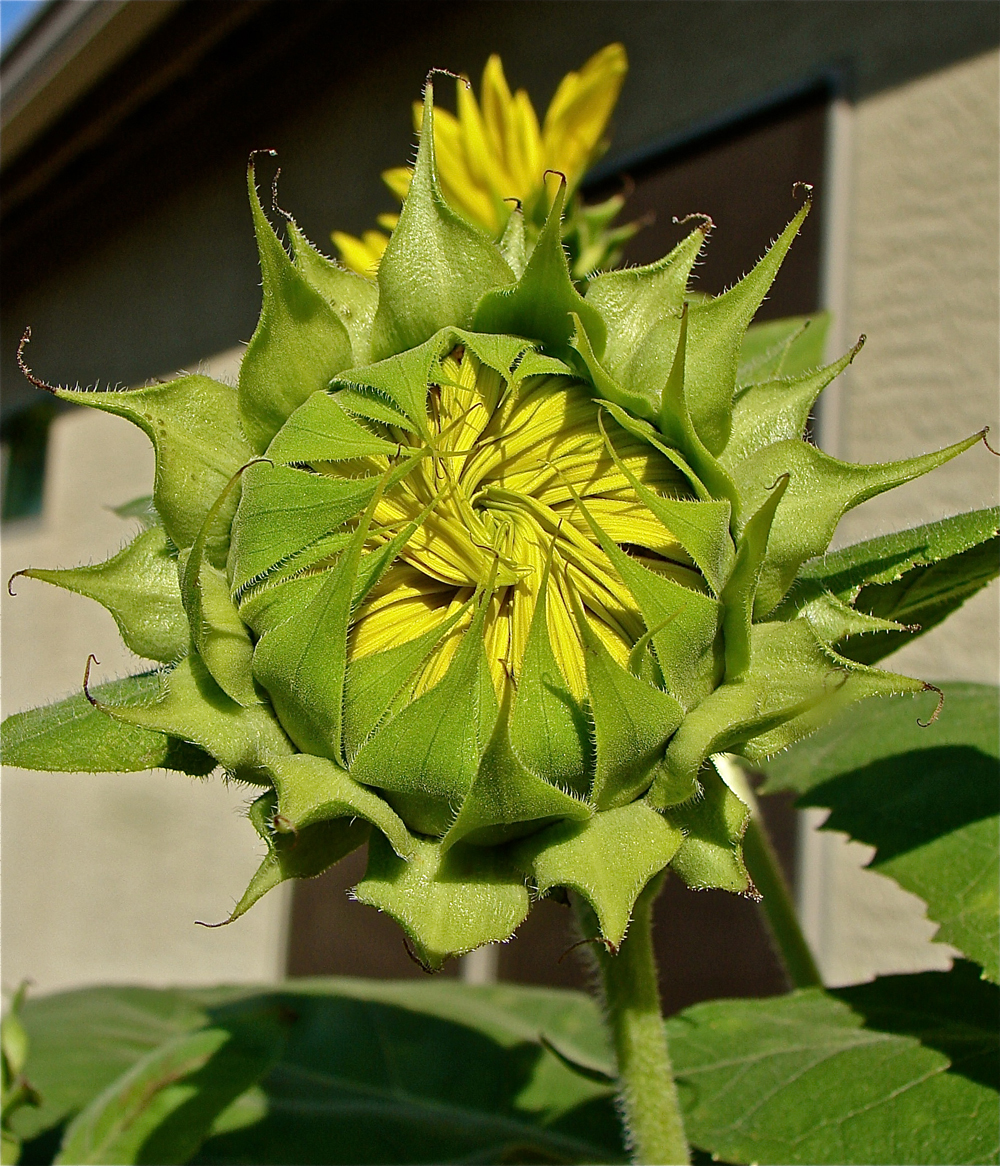
The unopened bud of a sunflower has the unique ability to track the movement of the sun across the horizon. This characteristic, known as heliotropism, stops once the buds open and the flowering heads remain oriented toward the east.
A beautiful specimen
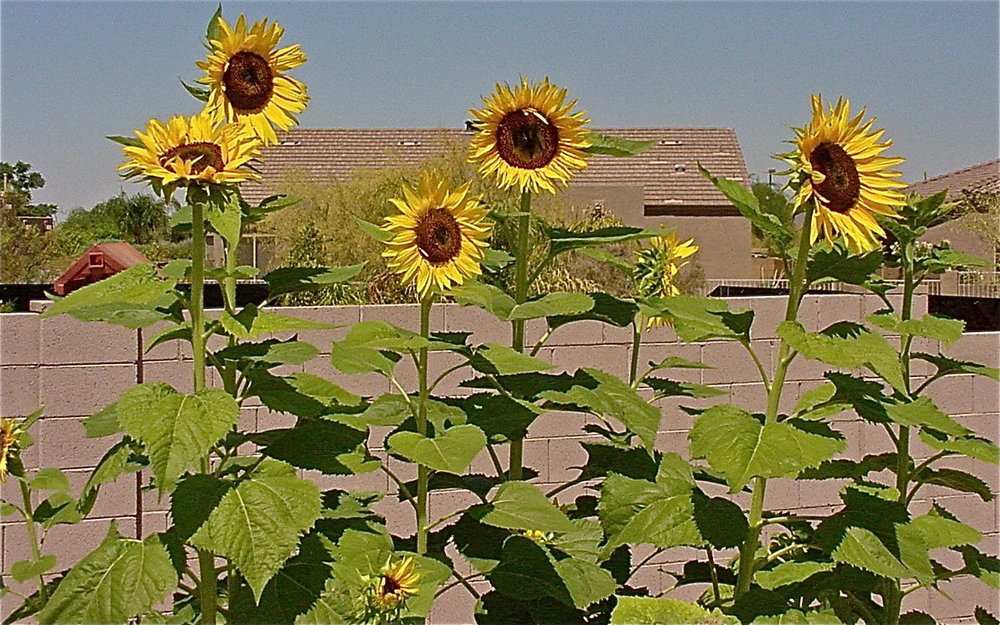
The stems of sunflowers can be 2.5 to 7.5 centimeters in diameter and 1.5 to 6.0 meters in height. The stout, herbaceous stem is hairy and rough and occasionally branches near the top. White pith fills the woody exterior but the stem often becomes hollow with age. The dark green leaves are large, ovate in shape and usually alternate in pattern. Each plant produces between twenty to forty leaves that provide a broad area of sunlight absorption. Leaves of young plants are highly heliotrophic, which tends to stop after floret fertilization has occurred.
Wild and free
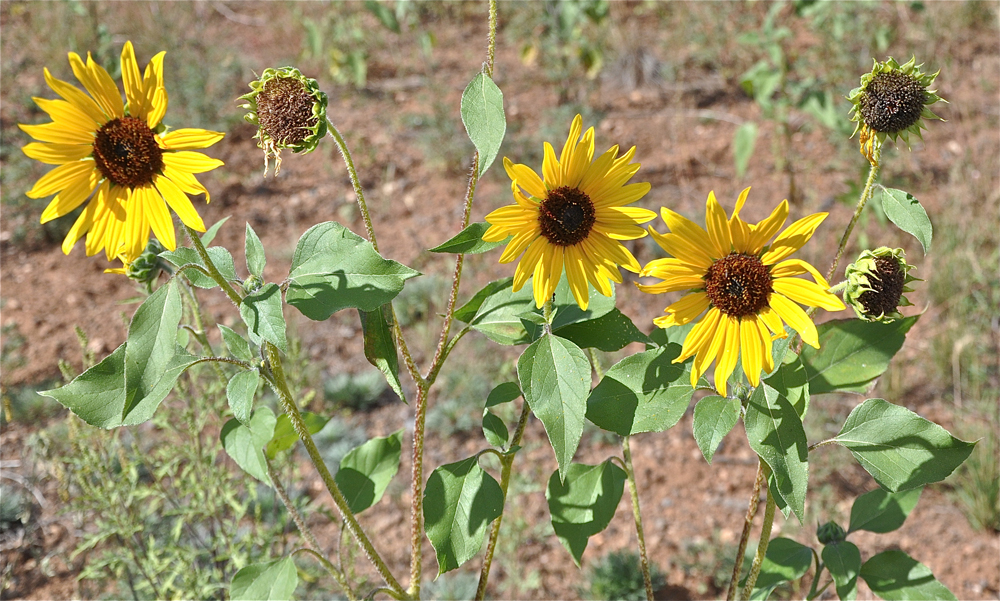
Unlike their one-headed, cultivated cousins, wild sunflowers growing in open fields and ditches and can have multiple flowering heads — some as many as 20 heads per plant. Both cultivated and wild sunflowers have a substantial, but shallow, root system. A large system of shallow feeder roots growing 6 to 10 inches (15 to 25 centimeters) under the soil spreads out from a taproot creating a broad anchor for the heavy-headed, mature plant. In some large cultivated sunflower species, the taproot can grow to a depth of 3 feet (1 meter).









